The US Navy Declared Initial Operational Capability (IOC) with its fleet of F-35Cs on February 28th, 2019. The milestone is a significant step on the road to the first scheduled F-35C deployment in 2021.
The US Navy joins the US Marine Corps and US Air Force now as the third and final US service to declare its F-35s mission ready and combat capable.
Six F-35 operators are now IOC, to include the USMC, USAF, US Navy, Israeli Air Force, Italian Air Force and the United Kingdom.
“We’re very proud of what our Sailors have accomplished in the Joint Strike Fighter community,” said CAPT Max McCoy, commodore of the U.S. Navy’s Joint Strike Fighter Wing.
“Their commitment to mission delivered fifth generation capability to the carrier air wing, making us more combat effective than ever before. We will continue to learn and improve ways to maintain and sustain F-35C as we prepare for first deployment. The addition of F-35C to existing Carrier Air Wing capability ensures that we can fight and win in contested battlespace now and well into the future.”
Meanwhile, Rear Admiral Dale Horan, director, USN F-35C Fleet Integration Office said:
“The F-35C will revolutionize capability and operating concepts of aircraft carrier-based naval aviation using advanced technologies to find, fix and assess threats and, if necessary, track, target and engage them in all contested environments,” adding “This accomplishment represents years of hard work on the part of the F-35 Joint Program Office and Naval Aviation Enterprise. Our focus has now shifted to applying lessons learned from this process to future squadron transitions, and preparing VFA-147 for their first overseas deployment.”


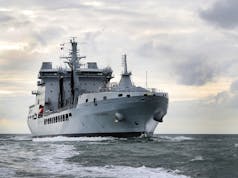
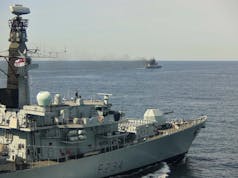
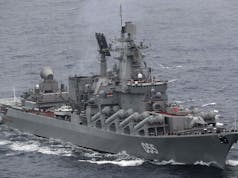
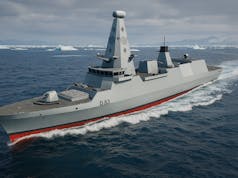

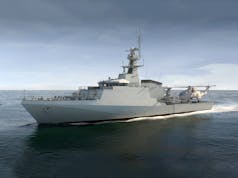



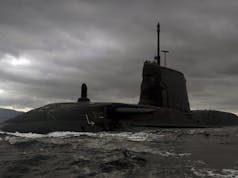

Excuse my ignorance but what is the ‘C’ variant? Can it perform like a ‘B’ or is it an enhanced ‘A’? Will ‘C’ capabilities be interchangeable with the UK’s ‘B’s?
It needs a Carriers catapult to launch and wire to catch upon recovering. “Cats and Traps”
Was going to be selected by the UK when HMG made the U turn in 2010 on our QEC being equipped with conventional catapults, then the 2 billion cost put a stop to that. The carriers had been designed for the B.
It cannot hover like a Harrier / F35B.
Longer ranged I think, and carries more.
Thanks for that Daniele.
If I recall rightly the US offered the EMALS catapult for free, probably with it being so new that we’d essentially be beta testing it with them.
I think the huge price tag cane from the carrier builders, who although they had pitched the design as allowing future installation of cat and traps hadn’t subsequently provided for it.
RGR it is not the catapult that has that price tag it is the cost of demolishing half the finished decks and cabins below to install it!
It was the cost of redesigning several decks work of equipment underneath to the effect of having a very powerful electromagnet over the top of its compartments.
Actually the QEC where designed for cats and traps and actually have the space to fit them .
It was not the cost that stopped the installation as Lockheed offered to do it at cost it was the treasury who did not want to split the F35B order between the A and C .
A change of mind by Cameron. Ttyen it was found to be too expensive and the design reverted to no cat and trap
C variant is for carrier operations. It has an arrestor hook fitted and more durable landing gear for landing on carriers as well as modifications to allow them to be launched by catapult assist. I can obviously take off conventionally as well if required from land bases.
Slow off the mark was I 🙂
The big difference in capabilities between B & C models is that B can only carry 2x1000lbs JDAMs internally, whereas the C (and the A) can carry 2x2000lbs ones internally.
Can anyone advise of the war load and range of the JSF B, vs the old Buccaneer? I thought the old Buccaneer could carry about 12 x 1,000lb bombs, with a range over 2,000 miles?
Maurice – to add to Daniele’s post,the ‘C’ is probably closer to the ‘A’ in performance,it has a bigger Wing Area,Folding Wings too for Carrier Ops,a strenghthened Airframe to cope with the extra Stresses of CATOBAR etc,its slightly heavier than the ‘A’ as a result but has about the same range due to more internal fuel.
The C is the carrier “cats & traps” version. It has the longest range, with a bigger, folding wing. It could not land on HMS Queen Elizabeth unless we fitted arrester wires, which there are no plans to do.
The C is not as agile as the A, nor does it have the internal gun of the A.
Sorry John didn’t see you’d already answered.
I still think we should fit an angled desk and wires to the QNLZ and POW. I know sooner or later an F35B is going to have brake failure and end up in a mess on deck with the straight through arrangement currently. The advantage is we can land drones and other allied aircraft even if they have to take off on the ski ramp. To me its a no brainer.
First lets rid ourselves of the 2% defence budget c/o hammond and go for 2.5%.
What might have been for our carriers. A worthy long range successor to Buccaneer.
I honestly believe that the UK needs to aquire some F35A’s on top of the B’s, the F35A has superior range, range, payload and manuvourability to the B. Now i’m not saying we should cut the number of B’s to leave us with an understrength carrier force but as it stands the B is a poor replacement for the Tornado
I believe the UK needs to aquire some F35A’s on top of the B. Now I’m not saying we should comprimise our carrier strike capability but the A has superior range, payload and manouverability, not to mention its far cheaper and also has an internal gun. The B is a poor substitute for the Tornado.
The C version has a wider and greater area wing to lower the stall speed for landing on carriers, it also carries more fuel the A version. The C has a lower G rating at +7.5g compared to the A’s +9g. Like the B it requires a gun pod as it doesn’t have the built in gun like the a version. It also uses a probe like the B for air to air refuelling unlike the A’s boom receptacle. Like has bee said before it has a strengthened fuselage and undercarriage for catapult launches and wire arrestor landings.
I wonder if the lower G rating of 7.5g is the Navy just lowering it to extend the life of the airframe just like they do with the Hornets. Hornets are capable of doing 9gs if the flight control systems allowed them too.
Pilots black out at 8g
I read a very informative piece on-line the other day, about the relative merits of why the QE class were equipped without C&A gear. It made for calm and well informed reading and totally supported the often repeated mantra, related to the ability to operate numbers of aircraft within a given timeframe. Wish I could remember where I read it!
Probably warships international fleet review- I remember a really decent article in there about the B variant vs C and how the B variant. like the harrier before it, has the quickest turn around time and the best sortie rate due to its VSTOVL abilities. 300+ sorties a day with circa 36 aircraft (full war load) is a great deal of airpower. That is not including helicopter operations on top of this.
The QE class just needs to be equipped with enough aircraft and escorts warships and screening submarines and ASW helicopters and the RN really will be back in business.
Interesting how times move on, only a year ago it was been reported ( from ususl negative sources) that the F35 C was too weak for an effective arrester hook to be fitted and that a major airframe redesign was required, sky falling in etc…. When in actual fact a minor redesign of the arrester hook cup has solved the initial teething arrested landing problems.
They made the hook more pointy. Don’t you just love high technology fixes.
RGR, so true, The media want to sell papers through sensational stories, such sensationalism is usually taken from a negative angle of doom, disaster and people’s mistakes, unfortunately the UK public feed this belief.
We are lucky they did not go for C variant and the new cat and trap gear they are using on the Ford class,there are still significant problems with the ship systems and they are massively over budget.We moan about our own yards and cost overruns but the U.S. makes us look positively efficient.
USN have rushed IOC without explanation-something is going on here. Also pretty sure it wasn’t cost that stopped conversion to cats and traps it was political pressure from the Americans to stick with the b as the then 2nd largest customer dropping out would make it’s production cost skyrocket even further
The QE/POW design went through many versions. I am told the short bow version was well into build, when Cameron wanted to switch from B to C. Fitting “cats” to the short bow would have been difficult/expensive, however, if we had built the long bow version, the fitting of “cats” would have been much easier.
France had a cat trap version of this variant designed though it was steam cats I believe, so doubt this was the problem.We missed a bullet with this one it was ill conceived from the start considering how much analysis had all ready been done through the design process.
I think we sold France the design for the long bow “cat” version, that also had provision for storing a few tactical nukes.
If we discovered a vast hoard of gold, then playing fantasy fleets, a new HMS Ark Royal, using the cats & traps, long bow version of QE/PoW & operating the F-35C , would be a great asset for the RN.
Sadly, very unlikely for many decades to come.
No it was the final QE design that they developed,the shorter one as you say.
JohnHartley – interesting post regarding the different versions,i was not aware of a Short or Long Bow choice to be honest,hopefully I found a pic which shows the difference http://4.bp.blogspot.com/-mCUlW6pRbzM/TaDAovrP_4I/AAAAAAAAAEc/cdnxMKEwHno/s1600/cvf-delta-av1.jpg.
Save the Royal Navy website did an interesting article on the evolution from 73000 ton “Alpha”, 55000 ton Bravo + C, through to the current 65000 ton “Delta” we have now.
They were planning a follow up article, on Cameron’s diversion to C from B & back again + the CTOL proposed French version. I think that will be an interesting read, when/if it appears.
That’s exactly the same ship just with paint in a different place
It was mainly cost dont forget this was the 2010 so called strategic review otherwise known as maximizing the amount of cuts possible.POW was to be converted and QE sold if possible.The cost of fitting cats was expected to be 3-4 hundred million not 2 billion plus.
I think there is an element of conspiracy theory sneeking in to fill the information void. QE was designed with additional space to support the envisaged addition of EMALS system which at thectime was in the very early design stage in the USN. There was never any intention to take the steam catapult route. As time progressed the build was sanctioned for F35B, non catapults, hence a lot of the space was changed and utilised for other functions. At the time that Cameron changed the requirement to F35C, QE had lost a lot of the required space and system potential for EMALS combined with a complete change in the physical requirements of EMALs found through US devoplment, hence considerable change in structure, power generation and power distribution would be required. The present US system is still csusing headaches onboard GFord and has put her entry date back four years so far. I think if we had gone down this route we would have lost the political interest in QE, just imagine the ongoing fuss in the fickle media. Yet here we are over a year into the most successful first of class entry trials running in parallel with successful F35 B service entry trials. All heading towards first operational deployment next year. At this time in space we took the correct route to ensure project completion. 50 Years of life is a long time, plenty of time to adjust QE for the next generation of aircraft and launch systems.
And now we have the RAF lobbying to only order 48 F35B because they are not suitable for replacing the tornado due to there lack of range and payload capacity.
The F35B is not a naval strike platform , it lacks the range and payload it is only suitable for close support like the USMC uses it for .
If we only order 48 F35B we will struggle to put even 16 on a carrier due to the rule a third in maintenance a third in training and a third operational.
Plus they have to be shared with the RAF requirements so yet again our politicians brought a pup.
And just a little bit of information the admiral who lobbied hardest for the RN and RAF to adopt the F35B retired after the decision was made and 3 months later took a job with Lockheed on $250,000 a year plus bonus .
To date he has earned $3.2 million from Lockheed.
Tom, we will not be down grading purchase to 48 F35b at RAF insistence, this is a false rumour ( I have heard it elsewhere). The RN and RAF are determined and committed to the full allocation of F35b 148+. There has been a bit of back room jostling by some RAF staff, not sanctioned by RAF command, who have been making a fuss about the lose of Tornado and as such are creating false rumours in an attempt to prolong Tornado, Two of these people were involved in choosing Tornado against Harrier a few years ago. The F35b was designed for seaborne operations from the beginning, The ranges/loads were anticipated and planned for, there is no slippage of capability from what was expected. It’s a non story.
Well the MOD has said they will not decide which variant they will order after the first 48 until the next SDSR so they must be considering the A.Personally I think its madness to split the buy over 4 active squadrons.
The decision to order more F35B will not be made until the next SDSR .
It is not rumour , the RAF have been lobbying for the order to be split because the F35B is not capable of replacing the tornado, its payload and range just aren’t there .
The F35B was not designed for naval strike operations, it was designed to replace the harrier,av8,warthog.
It has a pathetic combat range of 517 miles v 875 for the F35C can carry only 2500kg of weapons for that range v 7000kg for the F35C .
Cannot carry 2000kg bombs in its bomb bay negating its stealth features and in the field is proving to be very hard to maintain and turn around in action.
And finally it will come down to the money and ordering 90 F35A will save the treasury nearly £5.5 billion.
I have no issue with the A variant AS LONG as enough B have been ordered previously to surge 1 carrier if required.
Failure to provide that number wastes the billions spent on the QEC to operate aircraft it now can only host small numbers of.
So what would that be? 60-70 B?
I personally have never believed the UK will order the full 138. We did not order the full 250 Typhoons either, and there are countless other examples.
The RAF will have no 2000lb bombs after Tornado retirement and has no plans to put them on Typhoons so it’s irrelevant.
The range issue is also a red herring as tankers are always used these days.The RAF may want the A so it can’t be used on the Carriers and when the second naval squadron becomes operational they can hand over all carrier deployment to the Navy.The capital cost up front saving is real but the cost of operating 2 different aircraft types with separate spares requirements training etc will negate this.Given the small size of the active F35 fleet splitting it just restricts the flexibility the B variant gives us.
Not true the MoD has placed orders for 2000kg paveways .
When?
Do tell what tankers the QEC carry?
You do know the range of a voyager,they can support QE from a multitude of bases around the world when was the last time any operation with fast jets did not use multiple tanking.
How many Voyagers do we have GWM ?
So you are basically saying that the QEC can only operate where it is safe for the voyager to operate?
How many Sovereign airbase do we have east of Suez?
I seem to recall it took the RAF entire tanker fleet to support the black buck mission in 1982 .
You are just a useful idiot to the treasury GWM .
The RAF has a long long history of screwing over the RN and Army when it comes to sharing assets .
The F35B is the wrong plane for both the RAF and the RN
Plenty and QE won’t be operating in a British only operation, U.S. marine F35 ‘s have been operating out of the persion gulf for month over Afganistan with tanker support including that from alies that’s how it works.The point is there is no perfect solution and the simplistic arguments used to support the A model don’t stand up.Oh and Voyager is a commercial airliner conversion and can operate out of any suitable size airport as it it not weapons capable.
rather negates the stealthiness of the f35b though. “I can’t see the f35s but I can see the voyagers flying race track.” Perhaps we need buddy-buddy refueling which would probably also deny stealthiness!
You are truly deluded if you think we have enough voyagers to do as you suggest.
And you think India or Pakistan would allow us to use there bases to station voyagers?
The USMC is very unhappy with the preformance of there F35B as there latest reports to the Pentagon make clear it is not even close to meeting its targets which have been lowered twice already.
The F35B is a dog and 3 legged one at that .
Why do we need India or Pakistan we can use Diago Garsia.The QE’s will spend most of their time in the Gulf replacing American carriers and Voyager can support from a multitude of bases.We can’t afford cats and traps get over it.
Tom (It is really David!)#
Neither is the MoD planning to integrate Storm Shadow cruse missile, for arming either B or A versions.
Given that Typhoon (post Centurion) now replaces Tornado, isn’t this RAF who he obsolete? For me it’s a question of numbers: we need more aircraft whether it’s additional typhoons and/or accelerated F35b deliveries
Whinge not “who he”
No worries, we will agree to disagree on this one.
I must admit, I am curious on whether a STOBAR conversion for QE/PoW is viable/affordable.
The bugs on the US advanced arrester gear seem to be getting slowly fixed. Once it is reliable, I wonder how big a job it would be to fit it to QE/PoW?
Forget fitting Cats with all their issues (power,etc.), just lower the ramp to 8 degrees, so that agile CTOL aircraft can use it (though they may need a software update).
An air group of 1 sqn of F-35B for all weather fleet defence + close air support, plus a 2nd sqn of F-35C for long range, heavy strike, would make the most of the new carriers. In time, you might even get a STOBAR version of Tempest.
The issue is when the fighter is fully loaded with fuel and weapons, not even very powerful jet engines provide enough thrust to take off from a short runway.
The Russian carrier based aircraft only take off with only a small meaningful load of weapons!
No need to lower the ramp, as an F18F has successfully taken off using the ramp at Pax River. This was done to prove to India, that the F18 would be a better buy than the Mig29Ks (twice the price though!) for their STOBAR carriers. The Typhoon has a better power to weight ratio than F18E/Fs and Mig29Ks, so in theory it should be able to take off using the deck length and ramp of a QE class.
I have always wondered why a barrier is not part of the ships normal equipment, for two reasons, the first is to provide a means for a conventional CTOL aircraft to land where other options are out of range. The second option is for the F35s themselves. If any of the doors on the F35 fail to open for the lift fan or the rear exhaust. The aircraft still has the option of recovering to the carrier, especially when there are no tankers available of it is out of range of a runway on land.
The Americans tested skiramps with conventional agile fighters in the 1980s. They said agile CTOL works best with an 8 degree ramp, rather than the full 12 degree VSTOL ramp. Given the extra length of flight deck of QE over the Invincibles, I do not think an 8 degree ramp would cause the F-35B much trouble.